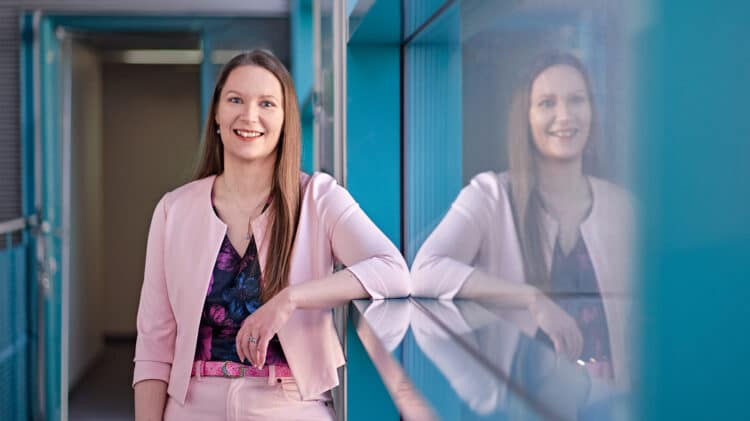
Sustainability at the Heart of 6G Innovation
Sustainability was identified as the critical driver for 6G R&D in the world’s first white paper published by the 6G Flagship in 2019. The white paper resulted from a stakeholder workshop at the 6G Summit in Levi in 2019. A follow-up white paper, published by the 6G Flagship in 2020, built a connection between UN SDGs and 6G. 6G Flagship’s Director of Sustainability and Regulation, Marja Matinmikko-Blue, sums up where we are now.
“The good news is that sustainability is included in all major agendas for 6G. A big milestone was reached in 2023 when the International Telecommunication Union Radiocommunication sector (ITU-R) published a globally agreed vision for 6G in its IMT-2030 framework recommendation,” Matinmikko-Blue rejoices.
Bridging Sustainability with 6G Development
A new element in the global 6G framework is to have four overarching design principles for 6G. These are sustainability, connecting the unconnected, ubiquitous intelligence, and security and resilience. “Incorporating sustainability, with its environmental, social, and economic facets, into the global 6G framework presented its challenges. However, we succeeded through persistent dialogue and collaboration,” Matinmikko-Blue shares about the practical hurdles. The global 6G definition work is set to proceed with defining requirements.
According to Matinmikko-Blue, one of the hurdles in 6G R&D is the integration of sustainability as a core driver at the individual level. There’s a need for crafting and implementing sustainability frameworks, including concepts, principles, indicators, and methodologies, within 6G development to achieve sustainable 6G solutions and utilise 6G to enhance overall sustainability. “This effort demands collaboration among various stakeholders and disciplines. Research initiatives are already exploring environmental, social, and economic dimensions of sustainability, advancing our comprehension of their impacts in the 6G sphere,” Matinmikko-Blue notes.
6G Flagship’s multi-disciplinary research agenda continues to cover business, regulation, technology and sustainability perspectives. “We published The Changing World of Mobile Communications, a book on the business of 6G including regulation and technology perspectives,” Matinmikko-Blue highlights the research approach taken in 6G Flagship.
Fostering Multi-Stakeholder Collaboration in 6G Innovation
Multi-stakeholder collaboration between industry, academia and regulation has been a successful mode of operation in 6G Flagship. “I would like to see more researchers being active at the intersection of industry, academia and regulatory fora and conducting research that brings science-based knowledge to the decision-making tables,” Matinmikko-Blue urges. “This requires knowing and respecting the ways of working of the regulatory fora, which are quite different from the academic domain.”
“Academic research must enhance its interaction with regulation and businesses for tangible impact – especially in my favourite topic, spectrum management,” Matinmikko-Blue exemplifies. This issue is increasingly relevant today as the debate over the 6G spectrum gains momentum. “We should build on the insights from over a decade ago with cognitive radio technology to prevent a disconnect between academic research and advancements in regulation and industry within the 6G spectrum context,” Matinmikko-Blue advises. “This principle also applies to sustainability. Success lies in collaboration and leveraging solutions that other fields have already discovered,” Matinmikko-Blue adds in conclusion.
About the writer
Marja Matinmikko-Blue is the Research Coordinator of 6G Flagship. She has two doctoral degrees: in telecommunications engineering and in industrial engineering and management. The theses focus on cognitive radio techniques and stakeholder analysis for spectrum sharing. She was first absorbed into spectrum management in 2004, in EU project WINNER. Matinmikko-Blue worked in close collaboration with industry and regulators on mobile communications spectrum requirements for the World Radiocommunication Conference in 2007 (WRC-07) at the International Telecommunication Union (ITU).
Since then, she has worked on cognitive radio systems and chaired those studies at the ITU, led the development of Finnish Licensed Shared Access (LSA) field trials, introduced stakeholder analyses into spectrum management research, and developed local 5G licensing and alternative operator models. Follow her on X @BlueMarja